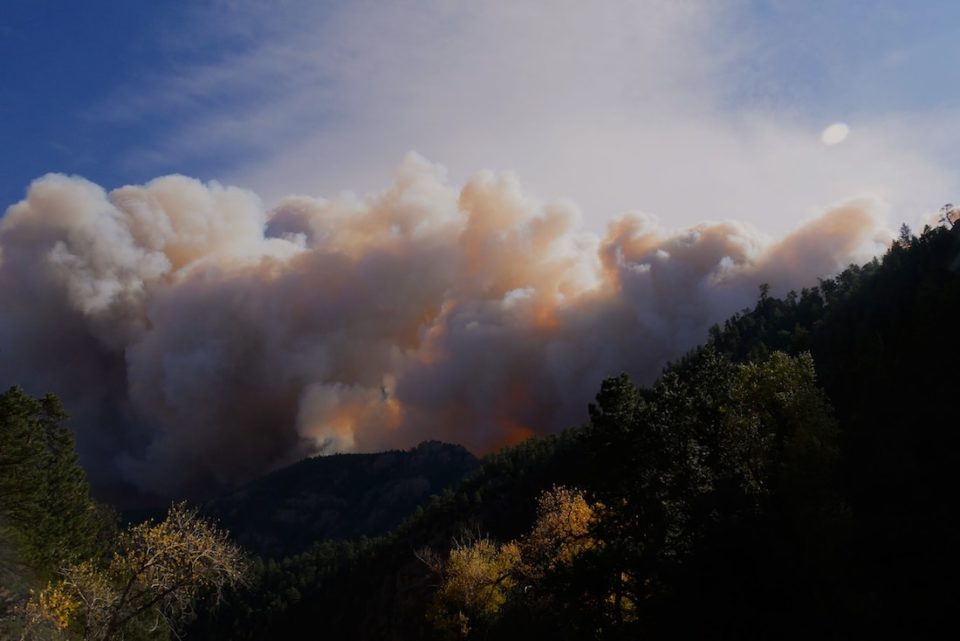We know now that the largest recorded fire in New Mexico history was started by an escaped “prescribed burn,” or rather by two. The Hermit’s Peak fire bolted away on April 6 when unexpectedly gusty winds blew sparks beyond control lines.
Then the Calf Canyon fire raced off on April 9 when similar winds fanned embers in burn piles first kindled in January. The two fires soon merged. Together, as of June 12, they have scorched 320,333 acres, with two-thirds of the fire perimeter regarded as contained.
New Mexico Gov. Michelle Lujan Grisham’s reaction was to insist that federal agencies reconsider their policy on spring burns. The chief of the U.S. Forest Service, Randy Moore, responded by announcing a halt on prescribed burning for a 90-day review period.
Inevitably, the blowups invited comparison to the 2000 Cerro Grande fire in New Mexico that began as a prescribed burn, then blew out of Bandelier National Monument and into Los Alamos. It was the largest chronicled fire in the state’s history — until now.
Prescribed fire is not likely to be challenged in principle. Recognition seems widespread that controlled burning is a legitimate source of good fire that can reduce the threat from areas likely to burn. States from Florida to California have even reformed liability law to encourage burning on private lands.
The real threat to fire management is death by a thousand cuts, each breakdown leading to shutdowns, each partisan group extracting a concession, that together so encumber the practice that it can’t be implemented. There is always something that can cause a prescribed burn to be shuttered. There is no equivalent mechanism to make up the loss.
It’s not news that the Western fire scene has become complicated. The early 20th century days, when one response — extinguish by 10 am the next morning — was adequate are long past. It was a marvelous administrative stroke: No confusion, no compromise, one size fits all.
But it made the fire scene worse by encouraging ecological rot and an incendiary buildup of fuels. The change in policy was clear and necessary: Fire is inevitable, and we need to manage it.
Today, all aspects of landscape fire are plural. Fire control does not mean one thing; it embraces many strategies. It might refer to protecting towns or sage grouse habitat. It can resemble urban firefighting, or for reasons of safety, cost and environmental health, it could mean containing fires within broad borders.
It varies from extinguishing an abandoned campfire to herding mega-fires rolling over the Continental Divide. It might involve bulldozing around municipal watersheds, or working-with-nature firelines in wilderness. It might mean setting emergency backfires that can resemble a prescribed fire done under urgent conditions..
So, also, with prescribed burning. It might mean burning logging slash or piled cuttings from thinning operations. Or it might refer to broadcast burns that range freely over areas from an acre to a landscape. It can mean burning to improve forage in tallgrass prairie, to prune pine savannas, or to promote habitat for Karner blue butterflies.
Wildfire acts as an all-spectrum ecological catalyst. Good prescribed burns will do the same thing.
The choice isn’t between one strategy or the other; it’s selecting from a variety of techniques that work in particular settings and seasons. We need them all, not least because each strategy by itself can fail.
Fires escape initial suppression at a rate of 2-3 percent. Prescribed fires escape at a rate of 1.5 percent for the National Park Service, or less than 1 percent according to Forest Service records. Managing naturally caused fires has a similar rate of failure. When an escape occurs, however, its destructiveness makes news.
Those figures are not likely to drop. We can’t control the setting of a wildland fire as we can a blowtorch. All we can do is juggle strategies so that each strategy’s strengths fill the others’ weaknesses.
The 2000 blowout in New Mexico made prescribed burning more difficult but led to a National Fire Plan. Twenty years later, the fire scene has grown bigger, meaner, tougher. The Hermits Peak fire will likely end up an order of magnitude larger than Cerro Grande.
Inevitably, our future holds a lot of fire. The goal is always to find and employ the right mix of fire for the land.
Steve Pyne is a contributor to Writers on the Range, a nonprofit dedicated to spurring lively conversation about the West. He is a fire historian, urban farmer and author of The Pyrocene. Top photo: Brian Wangenheim/Unsplash
Read more :
- Wildlife Lessons, Visitation Trends, Tribal Talks: Yellowstone at 150
- Wildlife Fauxtography May Be Behind That Instagram Post You Just Liked
- He’s the Number One Competitive Wilderness Sitter in the World
- Wilderness Guides Lead Winter-Long Snowshoe Epic Across Ontario
- Threats to Wild Spaces Can Unite Even the Unlikeliest of Groups
- Let’s Not Squander the Miracle of a Wild Yellowstone
- The Science Behind Aesop’s Menagerie of Wild Animals
- The Wildlife Monsoon Safari’s in India
- So You Wanna Be An Arctic Wildlife Photographer?
- The Wild, Bizarre Battle to Save the Florida Panther
- It’s Not Simply the NPS—Price range Cuts Are A Actual Drawback for Wildlife Refuges


1 comment
You could certainly see your enthusiasm in the article you write.The sector hopes for even more passionate writers like you who aren’t afraid to say howthey believe. All the time go after your heart.